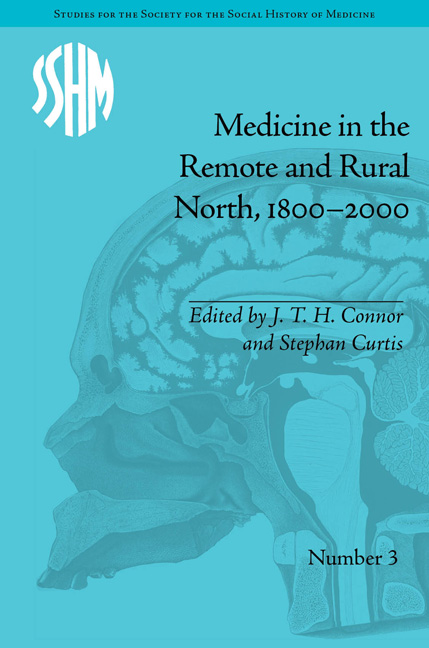Book contents
- Frontmatter
- CONTENTS
- Acknowledgements
- List of Contributors
- List of Figures and Tables
- Introduction: Cores/Peripheries – Rural/Remote: Medicine, Health-Care Delivery and the North
- Part I Remote Medicine and the State
- Part II Doctors and Doctoring in Remote Areas
- Part III Women, Health Care and the Practice of Medicine
- Notes
- Index
Part I - Remote Medicine and the State
- Frontmatter
- CONTENTS
- Acknowledgements
- List of Contributors
- List of Figures and Tables
- Introduction: Cores/Peripheries – Rural/Remote: Medicine, Health-Care Delivery and the North
- Part I Remote Medicine and the State
- Part II Doctors and Doctoring in Remote Areas
- Part III Women, Health Care and the Practice of Medicine
- Notes
- Index
Summary
Introduction
The authors of this section illuminate some of the major challenges states confronted in their efforts to provide medical care in remote areas. One problem was to attract and retain skilled medical practitioners willing to work in such isolated and physically demanding surroundings. Government officials also found it difficult to maximize the medical benefits they could offer while keeping costs firmly under control. This certainly was no easy feat when a small population was dispersed widely over a hostile environment. A sense of suspicion, both on the part of the medical practitioners and the intended recipients of medical innovations further complicated the efforts to introduce a more uniform level of medical care. Those living in the northern-western province of Russia that Steven Cherry and Francis King discuss were particularly reluctant to accept medical ‘outsiders’ and this was a major obstacle to the spread of academic medicine. Taken together, the contributions by Teemu Ryymin and Astri Andresen reveal a long history of state involvement in the provision of medicine to the Sami. During the course of the twentieth century the Norwegian government gradually abandoned its efforts to impose its perception of medical ‘improvements’ upon those living in the far north. Instead, it launched a comprehensive medical initiative particularly during the second half of the century that consisted of large financial expenditures and a new-found respect for Sami culture.
- Type
- Chapter
- Information
- Medicine in the Remote and Rural North, 1800–2000 , pp. 19 - 20Publisher: Pickering & ChattoFirst published in: 2014



